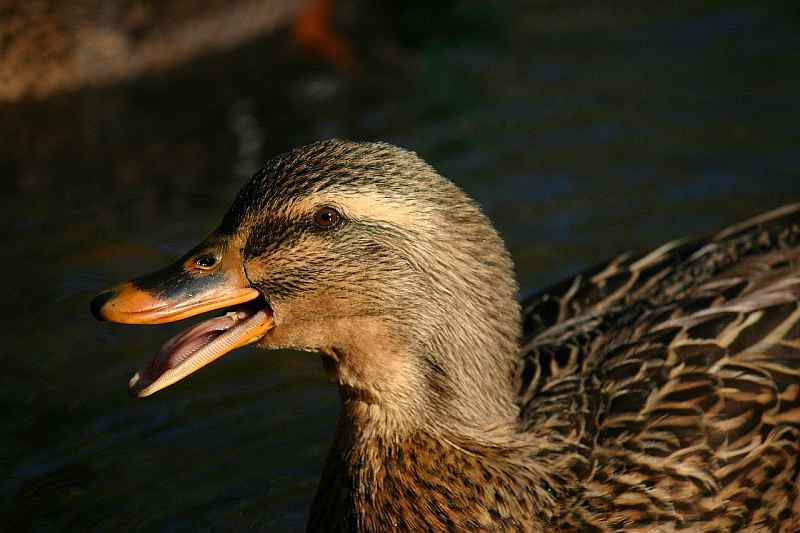You’ve probably heard the phrase ‘like a duck to water,’ but have you ever considered the phrase ‘like a duck to teeth’? It’s an odd question, admittedly, but one that opens a door to the fascinating world of avian biology.
Ducks, those common and seemingly straightforward creatures, have much more going on than meets the eye. You’d think it’d be easy to answer a simple question like, ‘Do ducks have teeth?’ but as you’ll soon discover, the answer isn’t as clear-cut as you might imagine.
Stick around; let’s unravel this feathered mystery together.
Understanding Duck Anatomy
To truly comprehend whether ducks have teeth, it’s essential to delve deep into the intricacies of duck anatomy. Duck lifespan studies often focus on their unique bill structure. You’ll find that instead of teeth, ducks possess serrated edges on their bills, called ‘pecten’. This feature helps them filter food particles from water, not for chewing as teeth do in other animals.
Now, let’s talk about duck mating behaviors. The shape and function of a duck’s bill play a crucial role here. Male ducks, or drakes, often have a broader bill, assisting them in attracting mates.
The Truth About Duck Teeth
Contrary to popular belief, ducks don’t have teeth in the traditional sense we often understand. What you might mistake for teeth are serrations or ‘lamellae’ on the edges of their bills. This is one of the common ‘Duck Teeth Myths’.
| Duck Teeth Myths | Teeth Evolution | Truth |
|---|---|---|
| Ducks have teeth like mammals | Ducks evolved teeth millennia ago | Ducks have lamellae, not teeth |
| Duck teeth are sharp | Teeth devolved to become lamellae | Lamellae are not sharp but are used to filter food |
| Ducks chew their food | Ducks need teeth to eat | Ducks sieve their food, they don’t chew |
Lamellae are a result of ‘Teeth Evolution’, created for filtering food from water. So remember, next time you see a duck ‘smiling’, what you’re actually seeing are lamellae, not teeth.
Exploring Duck Diet
Understanding a duck’s diet, rich in aquatic plants, insects, and small fish, can explain why they’ve evolved with lamellae instead of traditional teeth.
Duck feeding habits vary by species, but generally, they’re omnivorous and opportunistic. Aquatic plant consumption forms a significant part of their diet, with ducks often diving to forage on underwater vegetation.
Depending on their habitat, they also consume insects, small fish, and even crustaceans. The lamellae in a duck’s bill, similar to a comb, aids in sifting through mud, water, and vegetation, helping them to trap their food.
This specialized tool is efficient for their feeding needs, eliminating the necessity for conventional teeth. Therefore, understanding the duck’s diet helps us appreciate their unique evolutionary traits.
The Role of the Bill in Ducks
While you may not often give it much thought, a duck’s bill plays a crucial role in its survival, acting as a sophisticated tool for foraging, feeding, and even sensory perception. It’s more than just a simple appendage; it’s a highly specialized organ with distinct features and functions.
- Bill coloration: Not just for show, the diverse palette of colors displayed on a duck’s bill has a role in mate selection. Brightly colored bills signal health and vitality, attracting potential mates. Subtle shifts in color can indicate changes in health or stress levels.
- Sensory capabilities: A duck’s bill is filled with nerve endings, making it an effective tool for sensing the environment. Ducks use their bills to probe beneath the water’s surface, detecting and capturing food.
How Ducks Grind Their Food
You might wonder how ducks grind their food given they don’t have teeth.
The answer lies in their beak anatomy and a unique food processing mechanism.
Let’s explore how these aspects work together to aid in their feeding process.
Duck’s Beak Anatomy
Let’s delve into the unique anatomy of a duck’s beak, precisely how it grinds food, despite not having teeth. The beak coloration patterns and aquatic adaptations of ducks make for an interesting study.
- Beak coloration patterns: Ducks exhibit varied beak coloration patterns. They serve multiple purposes, such as species identification and mate selection.
- Species identification: Each species has a distinctive beak coloration, aiding in its identification.
- Mate selection: Often, vibrant beak colors indicate good health and genetic quality, attracting potential mates.
- Aquatic adaptations: Ducks have specialized features for aquatic life:
- Lamellae: These are tooth-like ridges inside the beak that help in filtering food from water.
- Hardened edges: The beak’s edges are hard, enabling ducks to grind food efficiently.
These attributes make ducks adaptable to their environment and diet.
Food Processing Mechanism
Having explored the structure and adaptations of a duck’s beak, we now focus on the fascinating mechanism ducks employ to grind their food, despite lacking conventional teeth.
Ducks use a unique part of their digestive system called the gizzard. This muscular organ contracts to grind and crush food, much like teeth would.
Aquatic feeding habits involve ducks scooping up food, including plants, insects, and small fish from the water. Once ingested, the food travels down the duck’s esophagus to the gizzard.
Tiny stones and grit, swallowed by the duck, aid in this grinding process, breaking down food into smaller, digestible pieces. Through this efficient food processing mechanism, the duck digestion processes function smoothly, even without teeth.
Comparing Duck Mouth Structures
Upon examining different avian species, you’ll notice a distinct difference in the mouth structures of ducks compared to other birds. This contrast is primarily due to the unique aquatic adaptation of ducks, which has influenced the formation of their bills.
- Duck Mouth Structure
- Bill: Ducks have wide, flat bills designed for scooping and straining food from the water.
- Teeth: Well, they’re not exactly teeth but serrated edges, or lamellae, that help catch and hold prey.
- Other Bird Mouth Structures
- Beak: Most birds possess pointed beaks ideal for pecking and tearing food.
- Teeth: Birds generally lack teeth, relying instead on their gizzard to grind food.
These structural differences also affect duck vocalization, with their unique bill shape contributing to their characteristic ‘quack’.
Frequently Asked Questions
What Is the Lifespan of a Typical Duck?
You’re curious about a duck’s lifespan, right? A typical duck can live up to 20 years, influenced by factors like duck mating rituals and migration patterns. It’s a fascinating study in avian longevity.
How Do Ducks Communicate With Each Other?
You don’t need to decode duck language or analyze their communication signals to know that ducks communicate through a range of vocalizations, body movements, and displays. No, they don’t use teeth to communicate.
Are There Specific Breeds of Ducks That Have Different Types of Bills?
Yes, different duck species have unique bill adaptations. These species-specific beak variations aren’t just about size or color, but also shape and function, reflecting each species’ particular feeding habits and environments.
How Do Ducks Keep Themselves Clean?
You’ve wondered how ducks keep clean. They use preening techniques, meticulously arranging their feathers with their bills. This action spreads oils, making their feathers water-repelling, vital for their health and survival in various environments.
What Kind of Habitats Do Ducks Usually Live In?
You’d typically find ducks in wetlands, rivers, ponds, and lakes. Their habitats often depend on duck migration patterns and predatory challenges. It’s not about if ducks have teeth, it’s about survival and adaptation.
Conclusion
So, you’ve learned the ropes about duck anatomy. Contrary to popular belief, ducks don’t have teeth. They rely on their specialized bills to sift, strain, and munch their food.
Their bill acts as a fine-toothed comb, helping them grind their meals. Like a duck to water, understanding this unique mouth structure gives us insight into how perfectly adapted these aquatic creatures are to their environment.
So next time, don’t judge a duck by its bill!

